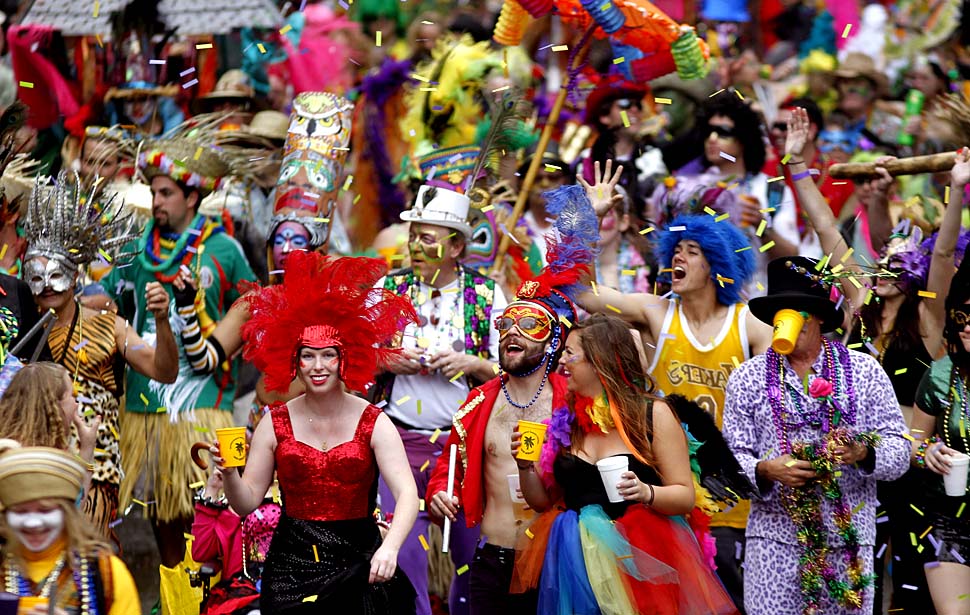If you haven’t been to Mardi Gras, know a bit about it before you head to the American south for this annual renowned event. The event dates back thousands of years to pagan celebrations of spring and fertility. When Christianity arrived in Rome, religious leaders decided to incorporate the popular tradition into the new faith, so the excess and debauchery of the Carnival season became a prelude to Lent, the 40 days of penance between Ash Wednesday and Easter. Mardi Gras marks the final day of feasting and revelry before the fasting, prayer and moderation of Lent.
The first Carnival season made its way to the U.S. via the French.Many historians say the first American Mardi Gras was on March 3, 1699, when French explorers Bienville and Iberville landed in Louisiana. As the years passed, the holiday became more lavish — and more festive.
The first recorded New Orleans Carnival parade occurred in 1827, when a group of students in colorful costumes danced through the streets.
In New Orleans today, the early weeks of Carnival are marked with elaborate balls.
These balls, which are invitation-only, celebrate the chosen royalty for each krewe, or private club, and also serve as a “coming out” for the season’s crop of debutantes, the daughters of the city’s social scions.
King cakes are traditionally served for the first time on January 6, or on Kings Day, and are enjoyed throughout the Carnival season.
Atraditional king cake is a braided cinnamon-laced brioche-like cake topped with icing and colored sugars: purple, green and gold, symbolizing justice, faith and power.
Outside Louisiana, the most well-known Mardi Gras festivals are in Rio de Janeiro, Brazil; Cologne, Germany; and Italy. The traditional Mardi Gras ball is a lavish affair, calling for floor-length gowns for women and tuxedos for men. On Mardi Gras, costuming is a big part of including the renowned beads you see everywhere.
Photo credit: snowbombing.com.

Renee Blodgett is the founder of We Blog the World. The site combines the magic of an online culture and travel magazine with a global blog network and has contributors from every continent in the world. Having lived in 10 countries and explored nearly 80, she is an avid traveler, and a lover, observer and participant in cultural diversity.
She is also the CEO and founder of Magic Sauce Media, a new media services consultancy focused on viral marketing, social media, branding, events and PR. For over 20 years, she has helped companies from 12 countries get traction in the market. Known for her global and organic approach to product and corporate launches, Renee practices what she pitches and as an active user of social media, she helps clients navigate digital waters from around the world. Renee has been blogging for over 16 years and regularly writes on her personal blog Down the Avenue, Huffington Post, BlogHer, We Blog the World and other sites. She was ranked #12 Social Media Influencer by Forbes Magazine and is listed as a new media influencer and game changer on various sites and books on the new media revolution. In 2013, she was listed as the 6th most influential woman in social media by Forbes Magazine on a Top 20 List.
Her passion for art, storytelling and photography led to the launch of Magic Sauce Photography, which is a visual extension of her writing, the result of which has led to producing six photo books: Galapagos Islands, London, South Africa, Rome, Urbanization and Ecuador.
Renee is also the co-founder of Traveling Geeks, an initiative that brings entrepreneurs, thought leaders, bloggers, creators, curators and influencers to other countries to share and learn from peers, governments, corporations, and the general public in order to educate, share, evaluate, and promote innovative technologies.









